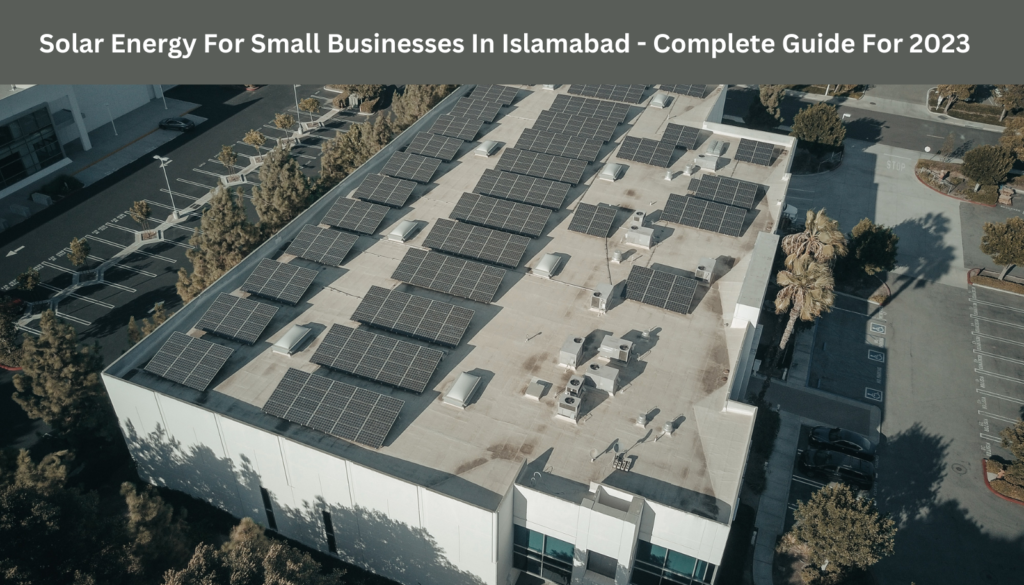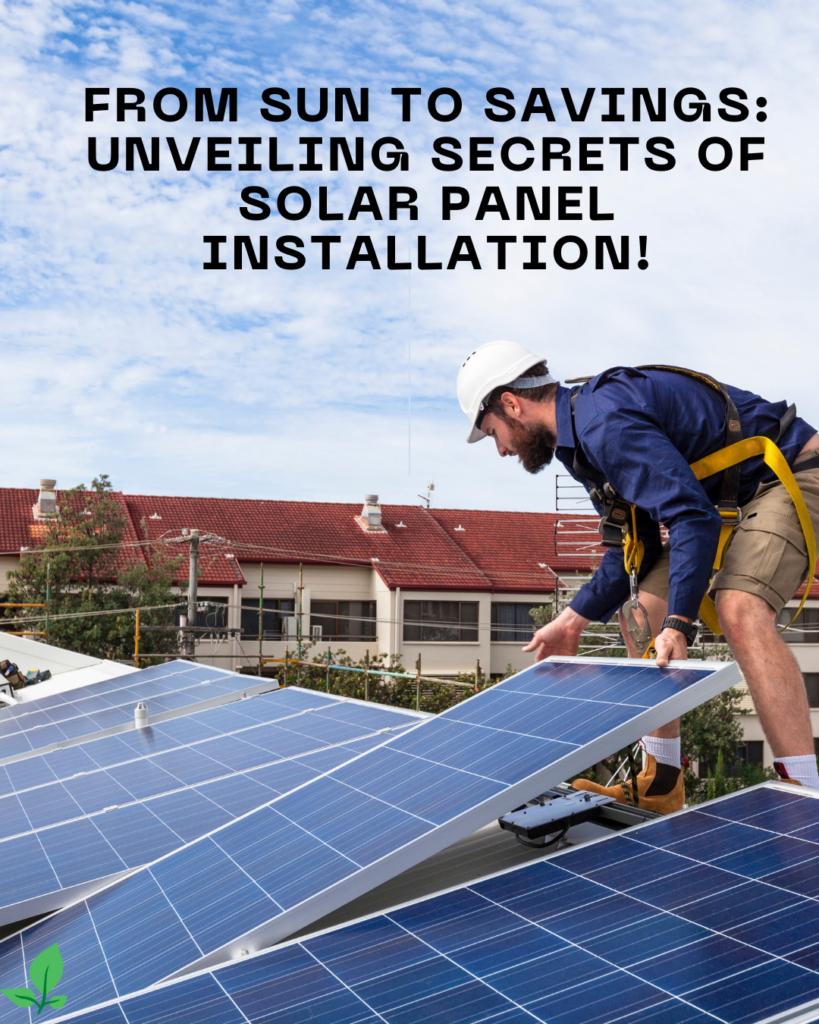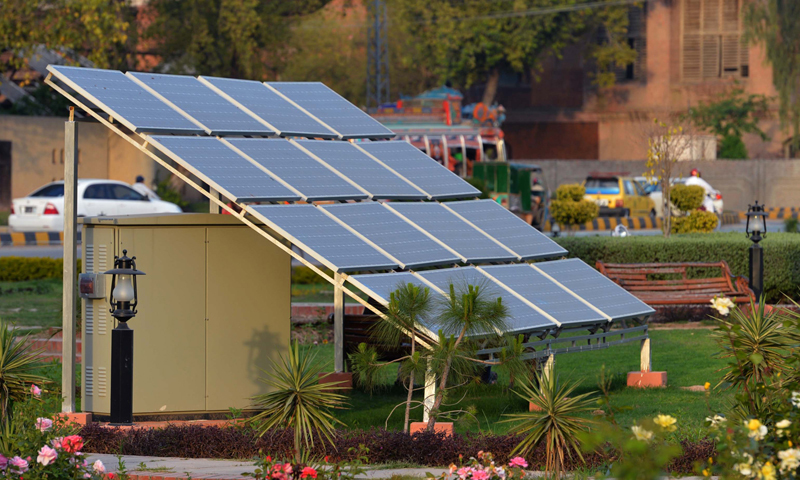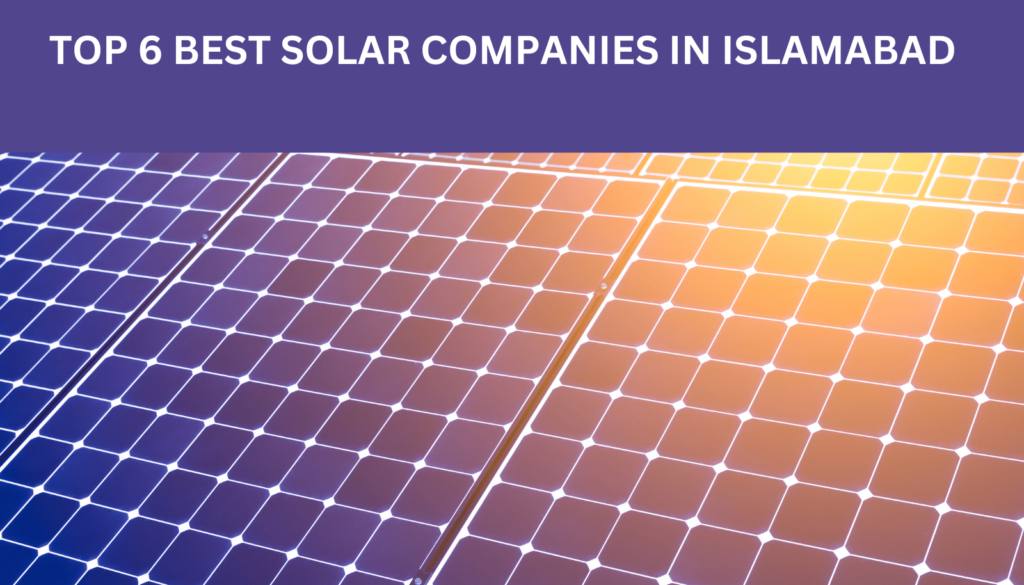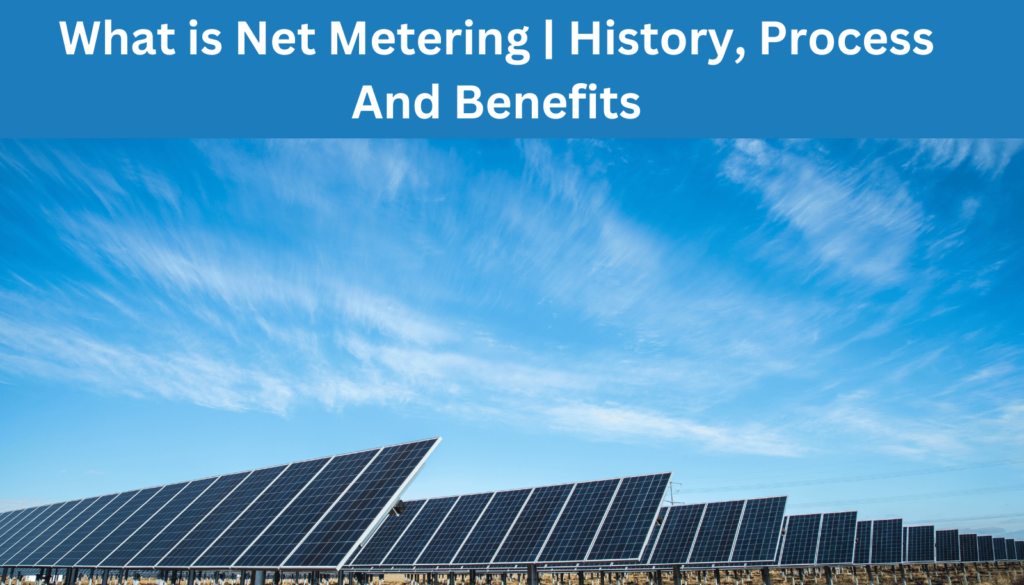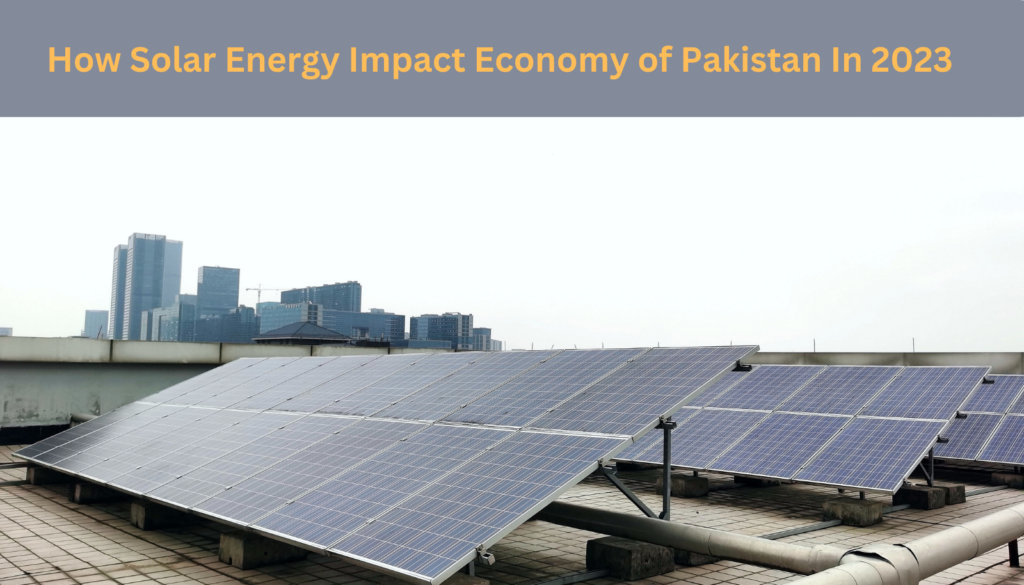For small business owners in Islamabad looking to reduce electricity costs and environmental footprint, installing solar photovoltaics (PV) represents an attractive option. This practical guide examines the benefits of switching to solar energy for Islamabad small businesses and provides actionable recommendations on how to successfully navigate the process.
Table of Contents
ToggleThe Case for Small Business Solar in Islamabad
Pakistan’s net metering program and falling solar equipment costs are making the business case for commercial solar energy in Islamabad increasingly compelling. Key advantages include:
Electricity Bill Savings
Solar energy directly reduces monthly power bills by generating your own electricity from the sun. Many small businesses can achieve 25-40% lower energy costs.
Improved Sustainability
Solar PV produces clean, renewable energy that lowers your carbon emissions. This burnishes your image with eco-conscious consumers.
Enhanced Reliability
Solar paired with battery storage can provide backup power to maintain critical operations during load shedding outages.
Fixed Pricing
While utility electricity prices fluctuate, solar locks in predictable power costs for decades through initial system investment.
Revenue from Net Metering
Excess solar generation fed back to the grid earns credits redeemable against your bills to further lower costs.
Lower Maintenance
Solar PV systems involve lower maintenance costs than backup diesel generators. Critical for cost control.
For these reasons, solar adoption is growing among commercial enterprises worldwide. Islamabad small businesses can reap similar benefits.
Solar Policy Context in Islamabad
Islamabad’s net metering program and nationwide solar policies add momentum:
- Small solar systems under 1 MW in size can interconnect for net metering credits.
- Solar equipment imports are sales tax and duty exempt to encourage adoption.
- Islamabad has mandated rooftop solar on large commercial buildings over 10,000 sq ft.
- Nationwide, Pakistan aims for 20% renewable energy including solar by 2025 and 30% by 2030.
While progress is happening, proactive efforts by small businesses will unlock Islamabad’s solar potential.
Solar Feasibility Assessment
Conducting a solar feasibility assessment involves several analyses:
- Electricity bill review – Gather 12 months of electricity usage history. Review seasonal variations, peak demand, and current tariff rates. This establishes baseline consumption needs.
- Space evaluation – Conduct on-site measurements of available roof and ground areas for solar arrays. Account for setback requirements from roof edges. Identify any shading issues from nearby structures or vegetation.
- Solar irradiation modeling – Use 3D modeling software to simulate the solar resource potential at the site based on roof layout, local shading and typical weather patterns. This predicts potential generation.
- Energy load calculation – Compare the modeled solar generation potential to the facility’s electrical loads to properly size the system. Oversizing can lead to net metering export limits while undersizing won’t fully offset usage.
- Financial analysis – Create a projected pro forma estimating key costs like equipment, labor, fees, financing. Model electricity cost savings from replacing grid power and net metering credits to determine ROI and payback period.
- Recommend system specifics – Compile formal feasibility report recommending optimal system size in kW, panel and inverter models, projected output, financials, and suitability conclusion.
Vendor Selection
- Issue a request for proposals to leading commercial solar companies in your region. Provide your facility details, feasibility study, and requirements.
- Compare bid responses on technical approach, designs, equipment, warranties, project timelines, and pricing.
- Interview shortlisted vendors in-depth on qualifications, experience with similar installations, operations and maintenance capabilities, and financial stability.
- Request and check client references to verify proven commercial solar expertise and track record meeting project commitments.
- Negotiate contract terms and pricing to maximize value. Lock in performance guarantees and warranties.
- Select the most qualified, cost-competitive bid that meets reliability standards and provides full professional services.
Project Design and Engineering
- Finalize system size and equipment selection – PV panel models, inverter specs, mounting and tracker equipment if applicable.
- Detailed electrical design – wiring schematics, conduit routing, combiner boxes, disconnects, grounding, monitoring hardware.
- Structural engineering analysis – ensures roof or site can support system weight and wind/seismic loads.
- Evaluate any required electrical service upgrades to support solar system interconnection.
- Finalize installation plan, labor, and timeline based on design elements.
- Submit final stamped structural, electrical plans along with equipment specifications and bill of materials for permitting.
Ongoing Operations and Maintenance
- Sign a maintenance agreement and monitor performance data over time
Careful process execution is vital to maximize the value of your commercial solar investment.
Solar Feasibility Considerations
The first step is assessing whether your facility is well-suited for solar PV installation. Key criteria include:
Space Availability
Your roof or grounds must have adequate unshaded space for solar arrays. As a rule of thumb, an average-sized small business needs 100-200 square meters for a robust 20-40 kW solar system. Parking shade canopies are another option.
Solar Resource
Ideally your location receives abundant direct sunlight, with limited shading from nearby buildings or trees. Islamabad’s sunny climate is generally favorable.
Electricity Costs
Businesses with monthly power bills exceeding Rs. 100,000 have the most potential for solar savings. Lower consumption may still merit solar but with longer payback.
Financial Health
Solar investments require strong, predictable business cash flows to service system financing payments. Assess your ability to take on additional expenses.
Remaining Building Lifespan
Installing solar on newer buildings with 20+ year remaining lifespans maximizes the investment value from decades of electricity generation.
If initial factors look positive, move ahead to detailed design and planning.
Choosing a Solar Equipment Vendor
Islamabad has numerous solar contractors. Here are tips for selection:
Experience and Reputation
- Prioritize established vendors with proven commercial solar track records. Check installed project examples and client references.
Services Offered
- Look for full turnkey services: design, equipment procurement, installation, interconnection support, maintenance.
Products and Technology
- Prefer equipment from leading brands with long lasting PV panels and inverters backed by 25-year manufacturer warranties.
Project Expertise
- Ensure the contractor has licensed commercial solar designers on staff with expertise in systems matching your facility’s needs.
Installation Capabilities
- Do they have qualified in-house installers? What commercial projects have they completed locally?
Maintenance and Support
- Choose a vendor that provides long-term maintenance contracts and performance monitoring services so you maximize solar output.
Taking time to make the right supplier choice ensures your system meets performance and financial goals.
Designing the Solar PV System
Through detailed site evaluation and energy usage analysis, the solar vendor will create a tailored system design. Key elements include:
Solar Array Size
The number, size, and power rating of PV panels to match your facility’s space and electricity consumption needs.
Inverters and Electrical
Inverter equipment and specs for converting DC current to usable AC power. Electrical upgrades may be required.
Mounting Method
Rooftop mounts or ground arrays secured through effective wind/seismic methods.
Panel Orientation
Optimal direction and tilt angle – usually south-facing near latitude tilt for Pakistan – maximizes solar irradiation.
Wiring Schematics
Details on wiring panels, inverters, switchboards and electric meter to national electrical code standards.
Materials and Labor
Bill of materials, project timelines, construction methods, labor requirements for installations.
The design phase ensures your solar power system is purpose-built for efficiency, safety and performance.
Solar Permitting, Net Metering and Interconnection
Following design, your solar provider will manage key approvals and paperwork:
Construction Permits
Securing building permits for the solar project from local authorities.
Net Metering Application
Applying to the utility for permission to interconnect your solar power system and net metering service.
Interconnection Requirements
Coordinating with the utility on any grid upgrades needed before connecting the solar system.
Inspections
Arranging for site inspections and authorization to operate the system after installation.
Proper permitting, interconnection approval and inspections are crucial to smooth project execution.
Solar PV System Installation Process
Once permitting and net metering are complete, the solar contractor will proceed to system installation. Key steps include:
Mounting Equipment
Securely installing ground or roof mounts to support solar arrays according to engineering specs.
PV Panel Assembly
Mounting and wiring panels into arrays on the racks according to design plans.
Inverter Mounting
Installing inverters near arrays and configuring to maximize electricity production.
Electrical Connections
Running conduit and connecting system wiring between arrays, inverters, switchboards and the building’s electric service.
Meter Upgrade
Swapping out the standard electric meter with a bi-directional net metering capable model.
Testing and Commissioning
End-to-end system testing to confirm proper functioning and safety.
The solar contractor will oversee the entire installation process and ensure the system functions as designed.
Operations, Maintenance and Monitoring
Once operating, best practice is to sign a comprehensive O&M agreement with your solar provider for ongoing maintenance and monitoring services. This includes:
- Annual system inspections, testing, repairs and preventative maintenance to maximize output and lifespan.
- Monitoring portal providing real-time and historical performance data like output, uptime, efficiencies.
- Troubleshooting outages and faults through error alerts and diagnostics.
- Optimizing inverter functioning and electrical parameters for ideal system operation.
- Panel cleaning and vegetation management if arrays are ground mounted. Some rooftop systems may also require occasional cleaning.
- Warranty and repair coordination with equipment manufacturers if needed.
Proactive maintenance is key to preserving your investment and achieving decades of optimal solar performance. Monitoring ensures you remain informed on system health and ROI.
Project Economics and Cost Considerations
For small businesses, the economics of solar hinge on total system cost, available subsidies and incentives, financing costs, and electricity savings. Key variables include:
Installed System Cost
Typical commercial solar PV costs range Rs. 70-90 per Watt including materials, labor, fees. Larger systems benefit from economies of scale.
Net Metering Value
The utility’s net metering rate determines revenues from solar energy fed into the grid. New Islamabad rates are around Rs. 19/kWh – verify latest figures.
Applicable Incentives
Factor available subsidies/rebates like provincial solar incentives, import duty exemptions on equipment which improve project returns.
Financing Cost
Lower interest debt financing results in greater lifetime savings. Compare loan options from banks/NBFIs carefully.
Electricity Displacement
Your actual utility rate and monthly peak sun-hour generation dictate value of solar electricity offset.
Crunch detailed cost-benefit projections to build the investment case tailored to your commercial power usage and financial situation.
Conclusion
For many Islamabad small businesses, switching to rooftop solar PV can yield real cost savings and sustainability benefits. This guide provides practical guidance for commercial solar newbies on assessing feasibility, selecting vendors, navigating installations, operations/maintenance, economics and key factors that influence ROI. While substantial planning is required, the rewards can be well worth the effort both financially and environmentally. Partner with one of Islamabad’s leading commercial solar providers to evaluate options suitable for your small business situation today.

